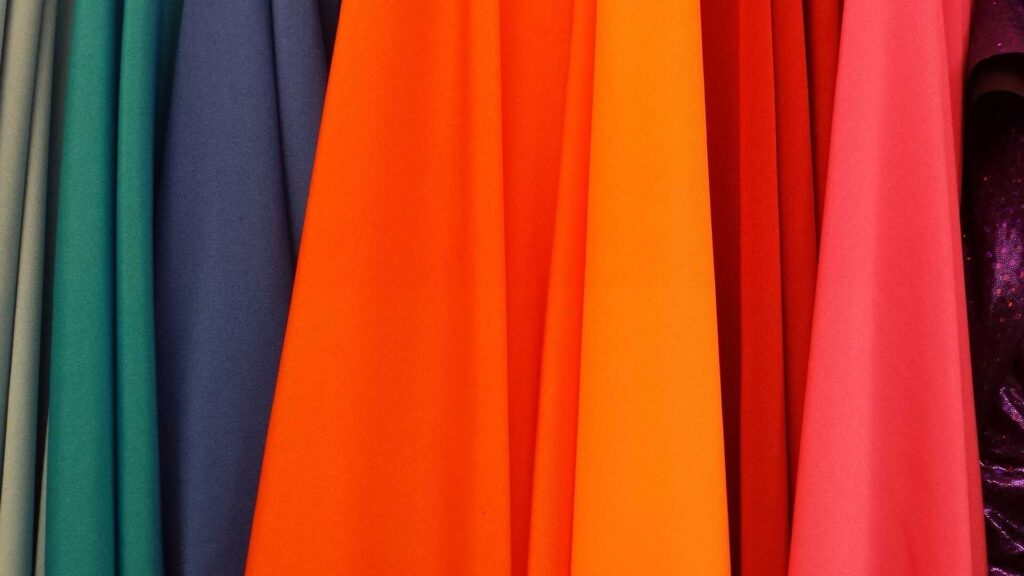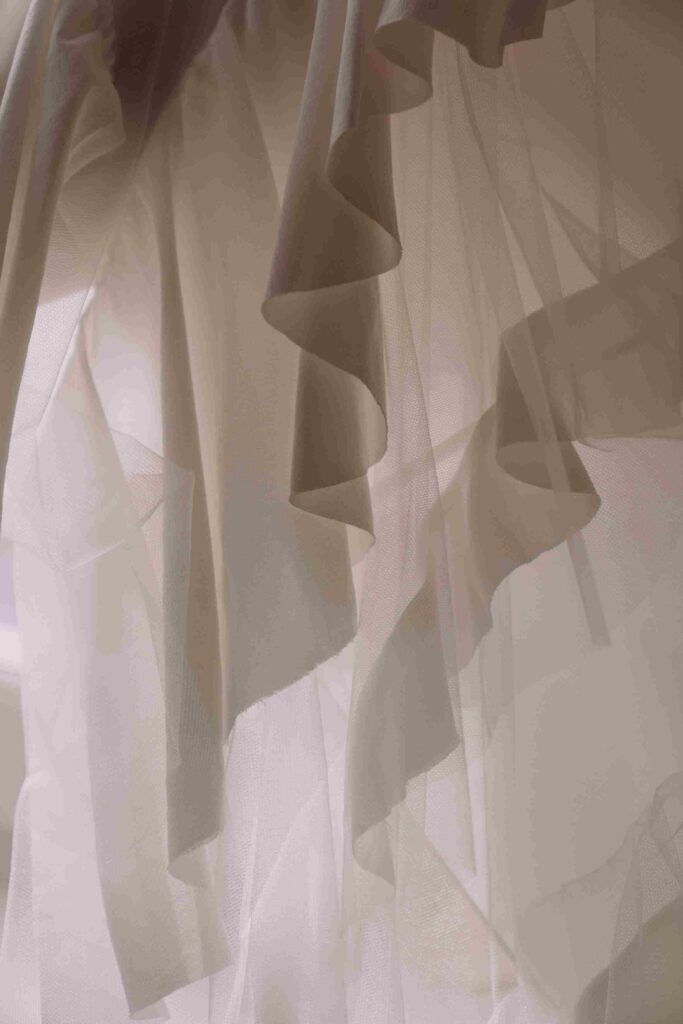Table of Contents
“Fashion is what you’re offered four times a year by designers. And style is what you choose.” a statement made by Lauren Hutton I am inspired and motivated by these statements because they help me realize that fashion and style are made up of the most fundamental components.
We all know the names of some of the natural fabrics that have been used throughout history, such as silk, cotton, and wool, but there is one fundamental fabric that is often overlooked: muslin cloth. In this article, I would explain in detail What is Muslin Cloth?
Fabrics have been used by humans for thousands of years. They have been used for clothing, decoration, warmth, and for protection. They have been used as symbols of status and wealth, as well as symbols of spiritual power.
.
Muslin cloth has been around since ancient times and is still used today, although it has come a long way since its inception. There are many types of muslin, each with its own unique characteristics, and it is commonly used in many industries, such as fashion, photography, and home decor.
I am Mohammed Ibrahim Anwar leading a firm called A. K. Ismail which was founded in 1947, and I am 3rd generation entrepreneur in the Textile and Garment sector. I and my team believe in providing the best quality and service to our customers.
In this article, I take a deep dive into explaining the fundamentals of Muslin Cloth to how Muslin cloth makes a fashion statement.
What Is Muslin Cloth
Muslin cloth is a plain weave fabric that is made from either 100% cotton or a blend of cotton and other natural fibers, such as linen, silk, or wool.
It is usually plain white or off-white in color, but can also be dyed in a variety of colors, patterns, and prints. It is known for its softness, breathability, and versatility, and is often used in fashion and home decor.

History of Muslin Cloth
The history of muslin cloth dates back to ancient times when it was used in India, China, and the Middle East. It was often used in traditional clothing and was often decorated with embroidery or other decorations. It was also used in religious ceremonies and was often seen as a symbol of wealth and status.
Over time, muslin cloth spread throughout the world and was used in many different cultures. It was often used as a cheaper alternative to silk, as it was much more affordable. In the 19th century, muslin was used by European brides as part of their wedding gowns.
Types of Muslin Cloth
There are many different types of muslin cloth, and the type you choose will depend on the type of project you are working on. The most common types of muslin cloth are Gauze, Mull, Poplin, Voile, and Sheeting.
Gauze muslin is a lightweight, transparent fabric that is usually made from 100% cotton. It is often used for medical dressings and bandages, as well as for clothing, curtains, and other lightweight fabrics.
Mull muslin is a medium-weight fabric that is usually made from 100% Cotton or a blend of cotton and other natural fibers, like linen or silk. It is usually used for clothing, curtains, and other medium-weight fabrics.
Poplin is yet again a multi-use fabric under the umbrella of muslin. This is a fabric that has a high thread count and is made out of 30’s to 45’s count of yarn and the GSM ranges from 110 to 140 GSM. Commonly used for men’s and women’s Garments and home textiles. A detailed write-up is given on my blog “Lifetime study on poplin cloth for embroidery and other uses of poplin fabric“
Voile muslin is a lightweight, sheer fabric that is usually made from 100% Cotton or a blend of cotton and other natural fibers, such as silk or wool. It is often used for clothing, curtains, and other lightweight fabrics.
Sheeting muslin is a medium-weight fabric that is usually made from 100% cotton. It is often used for bedding, curtains, and other medium-weight fabrics.
What is Muslin Fabric used for?
Muslin fabric offers a combination of lightweight and mid-weight fabric, in plain-weave cotton fabric that is commonly used for a variety of purposes. Some of the most common uses for muslin include:
> Apparel: Muslin is often used as a base fabric for clothing, as it is lightweight and breathable. It is also commonly used as a lining fabric for garments.
> Backdrops: Muslin is a popular choice for photography backdrops because it is inexpensive, durable, and easy to dye or paint.
> Theater: Muslin is often used in theater and film production as a background fabric for sets.
> Home decor: Muslin is often used for home decor items such as curtains and tablecloths.
> Crafts: Muslin is a popular choice for a variety of crafting projects, such as doll-making and quilting.
> Medical use: Muslin is also used in surgical fields as surgical drapes, and gowns and also used in wound care as it is soft and absorbent.
> Cooking Muslin Cloth. Muslin cloth is often used in the kitchen for straining ingredients and for wrapping food.
> Muslin Cloth for Baby. Muslin cloth is a popular choice for making baby clothes and blankets, as it is lightweight and breathable.
> Muslin Cloth Sarees. Muslin cloth is often used to make the traditional Indian saree, as it is lightweight and airy.
> Muslin Cloth for Filtering. Muslin cloth is often used for filtering liquids, such as wine or beer, as it is fine enough to catch the tiniest particles.
> Muslin Cloth Bags. Muslin cloth is often used to make bags, as it is lightweight and durable.
Overall, muslin is a versatile and durable fabric that can be used for a wide range of purposes. Additionally, you can also highlight the difference between different types of muslin fabrics available and their characteristics, their care instructions, and also the history of muslin fabric if possible.
How Muslin Cloth Is Made
Muslin cloth is made through a process of spinning, weaving, and finishing. The fibers are first spun into yarn, which is then woven into fabric. The fabric is then treated with chemicals and bleaches to give it the desired color and texture. Once the fabric is finished, it is ready to be used.
Benefits and Properties of Using Muslin Cloth
Muslin cloth is one of the most useful and versatile materials you can use. It’s soft, breathable, and durable, making it ideal for a range of different purposes. From covering furniture to creating window treatments and even using it as a swaddle for your baby, muslin cloth has many benefits.
Muslin cloth is hypoallergenic, making it a great choice for those who have sensitive skin or allergies. Additionally, muslin cloth is very absorbent, making it a great choice for those who are looking for a fabric that can draw moisture away from the skin. This makes it perfect for those who are looking to stay cool and comfortable during hot summer days.
At times a lot of people ask if muslin cotton is Breathable. And I say that since it is made out of cotton as a natural property it’s airy and breathable. The light, airy weave of muslin cotton allows air to flow through the fabric and keeps you cool and comfortable.
Perfect fabric for those who are looking for a fabric that can stand up to a lot of wear and tear. Additionally, the tight weave of muslin cloth makes it highly resistant to stains and odors. This makes it great for those who are looking for a fabric that is easy to clean and maintain.
When it comes to texture, muslin cloth is soft. Additionally, the tight weave of muslin cloth makes it perfect for those who are looking for a fabric that can provide them with a comfortable and luxurious feel.
Muslin cloth is incredibly absorbent, making it great for those who are looking for a fabric that can draw moisture away from the skin. In other words, the moisture-wicking properties of muslin cloth also make it great for those who are looking for a fabric that can help regulate body temperature This makes it perfect for those who are looking to stay cool and comfortable during hot summer days.
Muslin is easy to dye, print, and embroider, making it a great choice for custom projects and designs.
Muslin is machine-washable and easy to care for, making it a convenient choice for everyday wear
Muslin is an environmentally friendly fabric as it is biodegradable
Comparison with Other Fabrics
Muslin vs. silk: Muslin is less expensive than silk and is more durable and easy to care for, while silk is more luxurious and drapes beautifully.
Muslin vs. linen: Muslin is less expensive than linen and is softer, while linen is more durable and has a unique texture.
Muslin vs. polyester: Muslin fabric is mostly made out of natural fibers like cotton or a blend of cotton and other natural fibers like linen, silk, etc., while 100% polyester is a synthetic fabric. Muslin is more breathable and eco-friendly, while polyester is wrinkle-resistant and may be cheaper.
Muslin vs. rayon: Muslin is a natural fabric made from natural fibers, while rayon is a synthetic fabric made from cellulose. Muslin is more durable and eco-friendly, while rayon is softer and has a more luxurious drape.
Muslin vs. nylon: Muslin is a natural fabric made from cotton, while nylon is a synthetic fabric. Muslin is more breathable and eco-friendly, while nylon is more durable and water-resistant.

Muslin Cloth in Fashion Industry
Because of its weight, breathability, and adaptability, muslin cloth is frequently utilised in the fashion industry. It is frequently used to create garments including dresses, blouses, and skirts. Accessories like hats and scarves are frequently made using it as well.
One of the most popular uses of muslin in the fashion industry is in the creation of patterns for garments. Designers will often create a rough prototype of a garment using muslin, which allows them to make adjustments and fine-tune the design before it is made in the final fabric.
Muslin is also commonly used in the creation of lingerie, as it is lightweight, breathable, and easy to work with. It is often used as a lining for bras, as well as for making camisoles and other sheer undergarments.
In addition to lingerie and patterns, muslin is also used in the creation of draped garments such as sarongs and scarves. The lightweight, flowy nature of the fabric allows it to drape beautifully, making it perfect for these types of garments.
The Environmental Impact of Muslin Cloth
The production of muslin cloth can have a negative environmental impact, as it often involves the use of harsh chemicals and dyes. It is important to buy ethically-sourced muslin cloth, as this will help to reduce the environmental impact of production.
How to care for and maintain muslin cloth.
The first step in caring for muslin is to read the care label on the garment. Most muslin garments are machine washable, but it is important to check the label for any specific care instructions. If the garment is machine washable, it is best to wash it on a delicate cycle with a mild detergent. Avoid using bleach or fabric softener, as these can damage the fabric.
Before washing your muslin garment, it is important to pre-treat any stains. Use a mild stain remover and apply it directly to the stain, making sure to work it in gently. Allow the garment to sit for a few minutes before washing.
When washing your muslin garment, it is important to use cold water. Hot water can shrink or damage the fabric, so it is always best to wash muslin in cold water. If possible, it is best to wash muslin garments separately from other items to avoid snagging or stretching.
After washing, it is important to avoid wringing or twisting the garment, as this can cause stretching or damage. Instead, gently press the water out of the garment, and then lay it flat to dry. Avoid hanging muslin garments to dry, as the weight of the wet fabric can stretch or misshape the garment.
Ironing muslin is also crucial for maintaining the shape and appearance of the garment. When ironing, use a warm iron and avoid using steam. If the muslin is sheer, it is best to iron it on the reverse side to prevent any shine or damage to the front.
If your muslin garment requires dry cleaning, make sure to inform the dry cleaner that the garment is made of muslin. Some dry cleaners may use harsh chemicals or high heat that can damage the fabric.
Muslin is also known for wrinkling easily, so to avoid this, it is best to store your muslin garments folded in a drawer or on a shelf. Avoid hanging muslin garments in the closet, as the weight of the fabric can stretch or misshape the garment.
To sum up, muslin fabric that has been used in the fashion industry for centuries. To ensure that your muslin garments last as long as possible, it is important to properly care for and maintain the fabric. Always read the care label on the garment, and avoid using bleach or fabric softener. When washing, use cold water and avoid wringing or twisting the garment. Lay the garment flat to dry, and iron with a warm iron. Be cautious when dry cleaning muslin and store folded in a drawer or on a shelf. By following these tips, you can ensure that your muslin garments remain in great condition for as long as possible
FAQ
Difference Between Cotton and Muslin.
Let me explain this in detail. Cotton is a natural fibre and Muslin is a product derived from this natural fibre. Secondly Muslin as a product can have a combination of Cotton and other fibres to get the desired results. In short it’s like finding the difference between Coconut tree and coconut oil.
Is Cotton Gauze the Same as Muslin
Cotton Gauze is product which comes under Muslin cloth, which is a broad category. Let me list the sub categories that come under Muslin Cloth.
a) Gauze,
b) Mull,
c) Voile,
d) Sheeting
Gauze is a light weight fabric made from cotton fibre and commonly used in hospitals, garments and supporting fabric in home décor.
Is Muslin Cloth Transparent
Muslin is a versatile fabric as the requirements be it made in light weight fabric and in mid weight fabric. The light weight fabric of muslin is loosely woven and the yarn count is also fine and thin hence it has a see through effect and gives a transparent look. For example, bandage cloth.
As the weight increases, the count of yarn and density of yarn increases the look improves and looses the transparent properties.
So it depends on which Muslin cloth that you want to use for your project.
Why Are Muslin Cloths Good for Baby
Muslin cloths are good for baby because they are lightweight, breathable, and soft. They are also highly absorbent, making them perfect for cleaning up after meals and for burp cloths.
Can Muslin Be Used for Clothes
Yes, muslin can be used for clothes. It is lightweight, breathable, and versatile, making it perfect for summer clothing. It is also strong and durable, making it ideal for everyday wear.
Conclusion
Muslin cloth is an incredibly flexible fabric that has been around for centuries. It is lightweight, breathable, and durable, making it perfect for a variety of projects, such as clothing, home decor, and photography backdrops.
The most common types of muslin cloth include gauze, mull, and voile. Each type has different characteristics and care instructions. You can also highlight the difference between different types of muslin fabrics available and their characteristics, their care instructions, and also the history of muslin fabric if possible.
You can use muslin cloth for a variety of sewing projects, including making clothes, quilts, or aprons. You can also use it for crafts such as doll-making or quilting. You can also use it to filter liquids, such as wine or beer. The best part? Muslin cloth is soft and easy to work with. It’s also extremely affordable.
If this article entices you to produce engaging products out of Muslin do send us a mail at [email protected] else call us at +91 9677253786 and we will be more than happy to respond.



Pingback: A List Of Best Natural Fabrics Names & Qualities In Market
Pingback: Exclusive Guide 2 What Is Mulmul Fabric? From Making To Uses
Pingback: Lifetime Study On Poplin Cloth For Embroidery And Other Uses
Pingback: Knowing What Is Voile Cotton? & Voile Fabric Construction
Pingback: The Secret To How Fabric For Sheeting Are Graded By.